King Solomon, who ruled over the united Kingdom of Israel and Judah some 3,000 years ago, is noted for greatly expanding his kingdom’s military, and that included gathering horses and chariots from as far away as Egypt. Biblical sources cite Solomon having as many as 1,400 chariots, with special centers being constructed to house them.
Though vulnerable and fragile, while also requiring fairly level terrain to be effective, chariots were famously used throughout the ancient world as they proved an effective means to quickly transport archers into battle. It was thus fitting that the modern State of Israel named its series of main battle tanks (MBTs) the Merkava — the Hebrew word for “chariot.”
Since its adoption, it has become the backbone of the Israel Defense Forces (IDF) armored forces.
Origins of the Merkava Tank
Prior to the Six-Day War in 1967, the IDF’s armored forces operated U.S.-made M4 Sherman, M48 “Patton”, M60, and British Centurion tanks, along with Soviet types that were captured in previous Arab-Israeli Wars. A major concern for the Israeli government was its reliance on Western hardware.
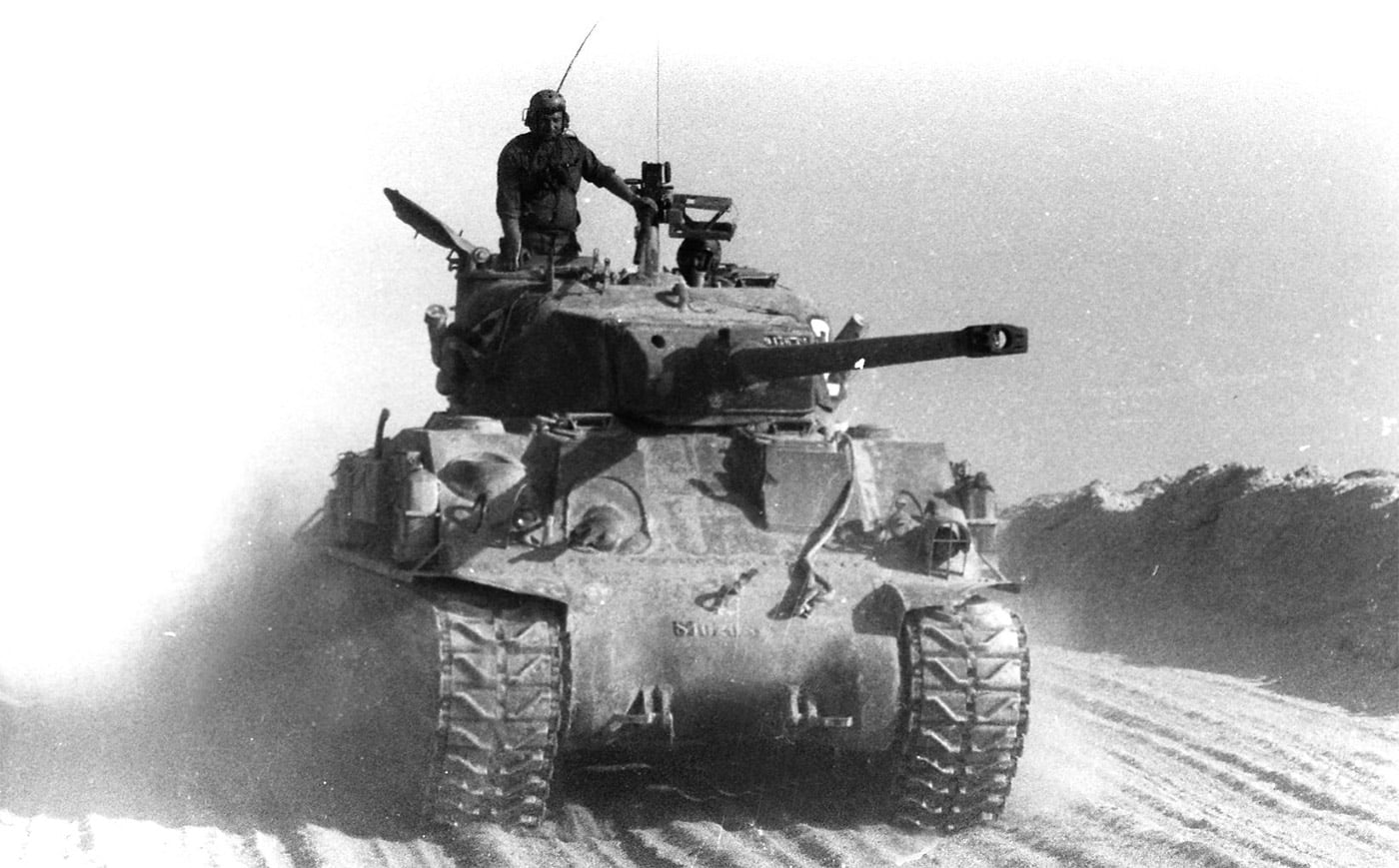
In the 1960s, the IDF collaborated with the British military on design aspects of the Chieftain tank, and Israel even received two prototypes for a multi-year trial. Then in June 1969, the British Parliament opted not to sell the Chieftain to Israel as it was already being offered to Arab nations.

The IDF responded quickly, opting to produce its own tank.
The Jewish state had successfully created a domestic arms industry, which produced such iconic weapons as the Uzi submachine gun. In 1970, it took on a far more ambitious program to develop a domestically produced tank, and to do so almost entirely within Israel and with little outside support.
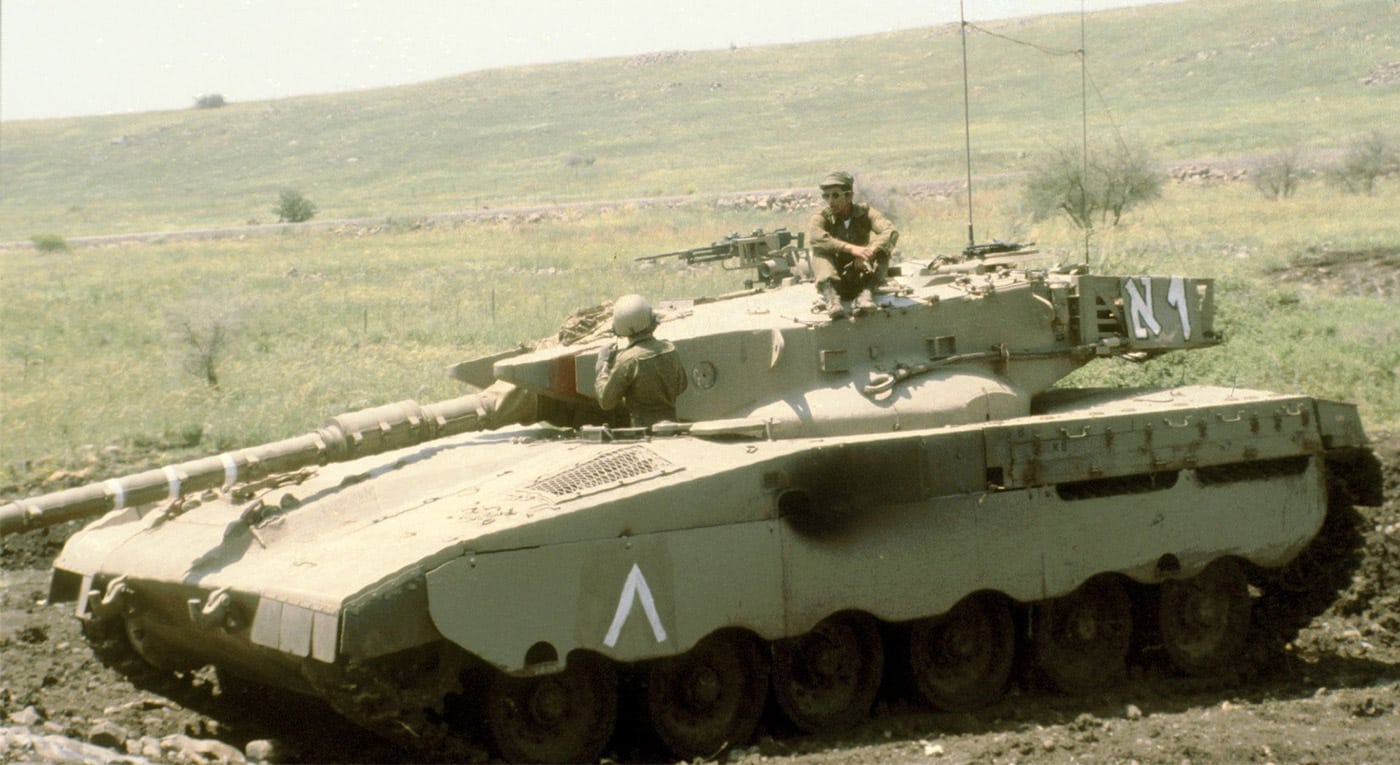
Under the direction of Major General Israel Tal, design work moved quickly on what was to become the Merkava. An initial prototype was completed in 1974, but the IDF’s modern chariot wasn’t publicly disclosed until 1977. Two years later, it entered service with the IDF’s armored forces.
Not the Fastest Main Battle Tank
Compared to modern MBTs, Israel’s Merkava was far from a speed demon. Unlike the fast-moving chariots employed by King Solomon’s army or the speedy tanks that were used during Germany’s Blitzkrieg and the Soviet Red Army’s campaigns against the Nazis, the Merkava was slow due to a poor power-to-weight ratio. That really shouldn’t be seen as a design flaw, however. All tanks are the result of a compromise between firepower, protection and mobility.
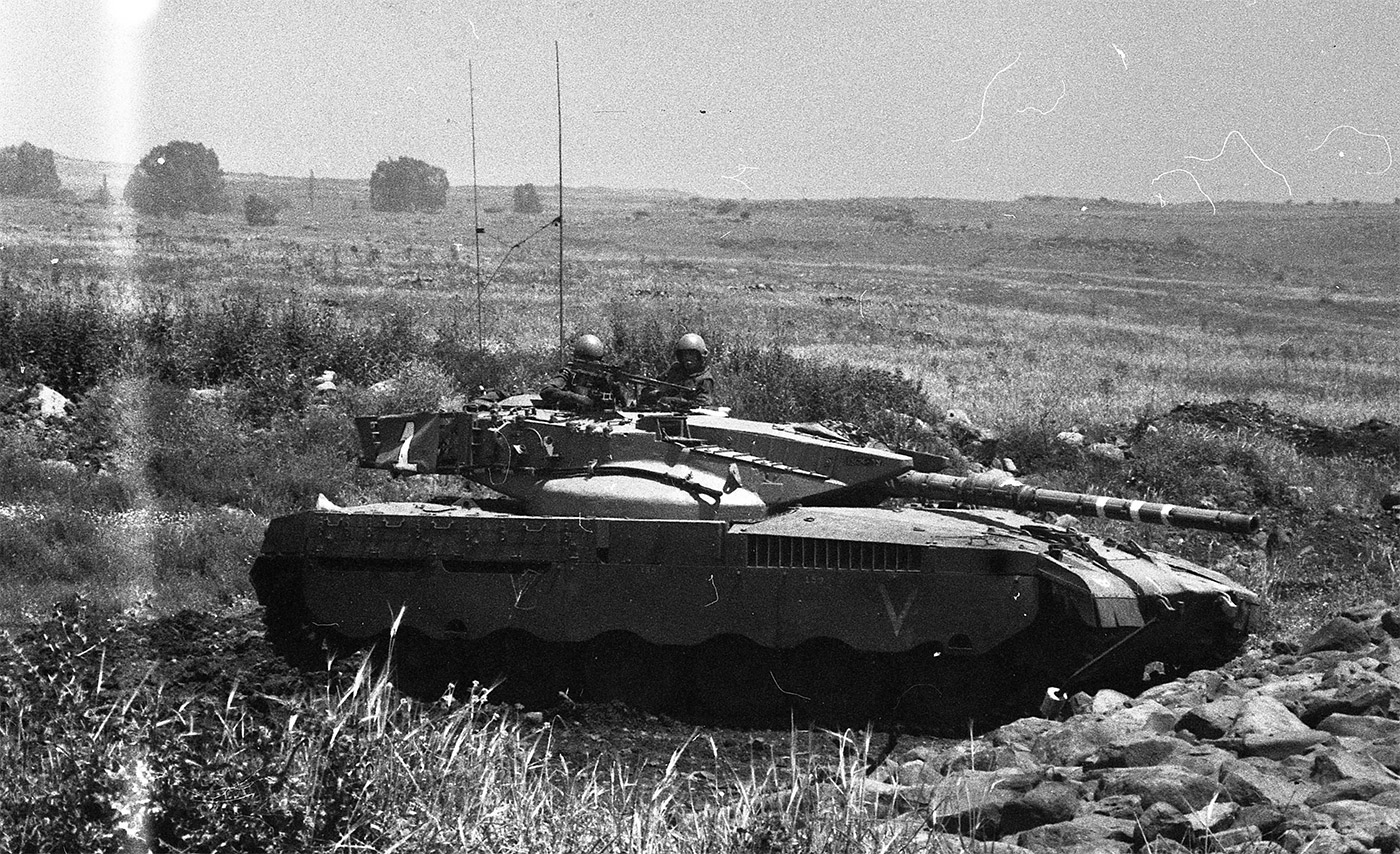
The Merkava was optimized for operations in the rough terrain of northern Israel and the Golan Heights, while greater emphasis was placed on crew survivability. Being a small nation with much less manpower than its larger neighbors, Israel saw that it could afford to lose tanks, but not crews.
That resulted in a small cross-section, which made it less of a target. In addition, the Merkava offered an unusual layout, with its engine and transmission in the front and fighting compartment in the rear. That further enabled the ammunition to be stored in the rear of the tank, safer should it take a direct hit to the front, while a rear hatch enables replenishment even in combat zones.
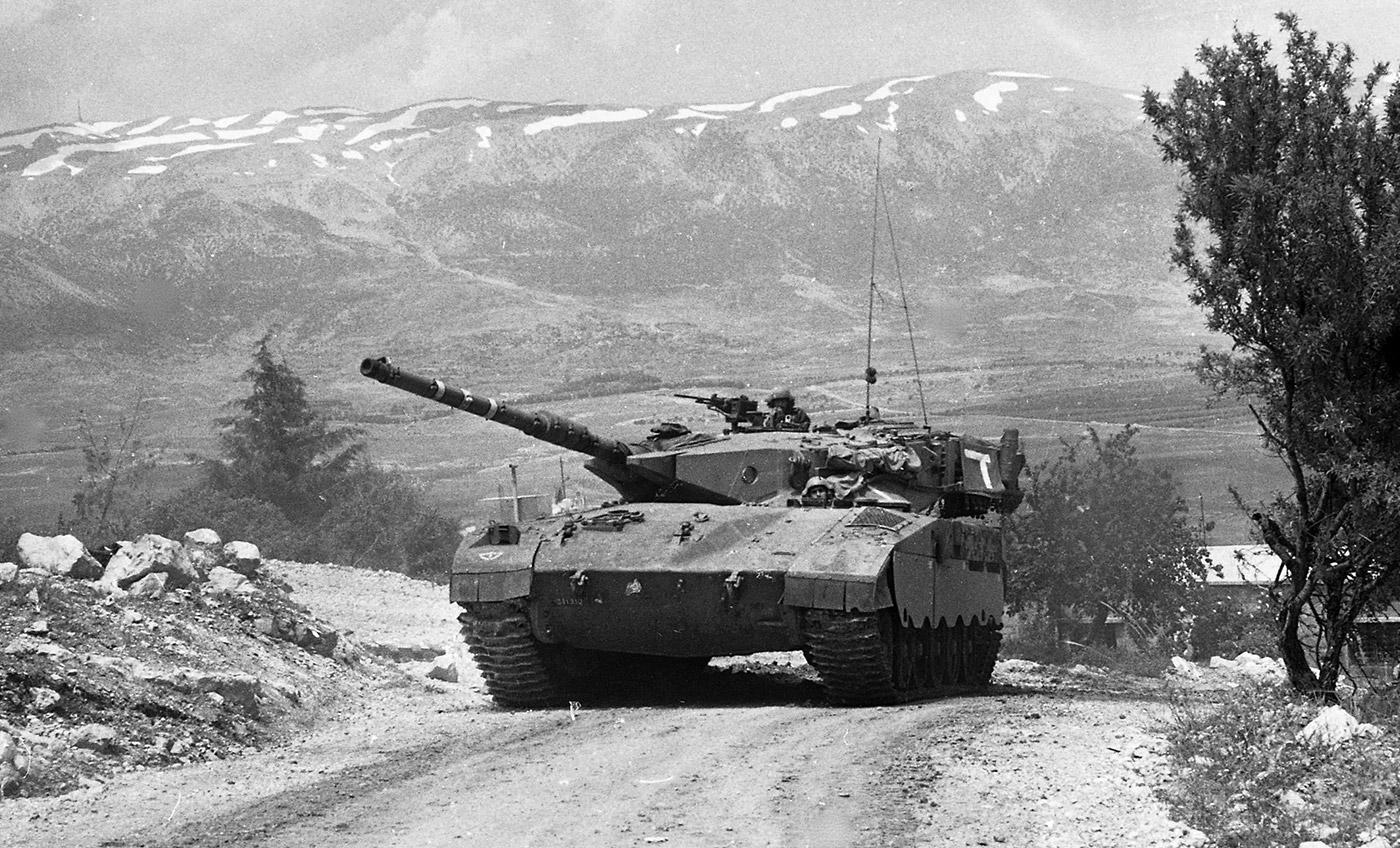
The driver’s position was forward and to the left, with the engine to the right, while the commander and gunner were seated in the turret on the right, with the loader on the left. With cast and welded construction, the turret was also designed to offer a small frontal cross section that presented a small target to an adversary, while it was sloped to provide a maximum degree of protection.
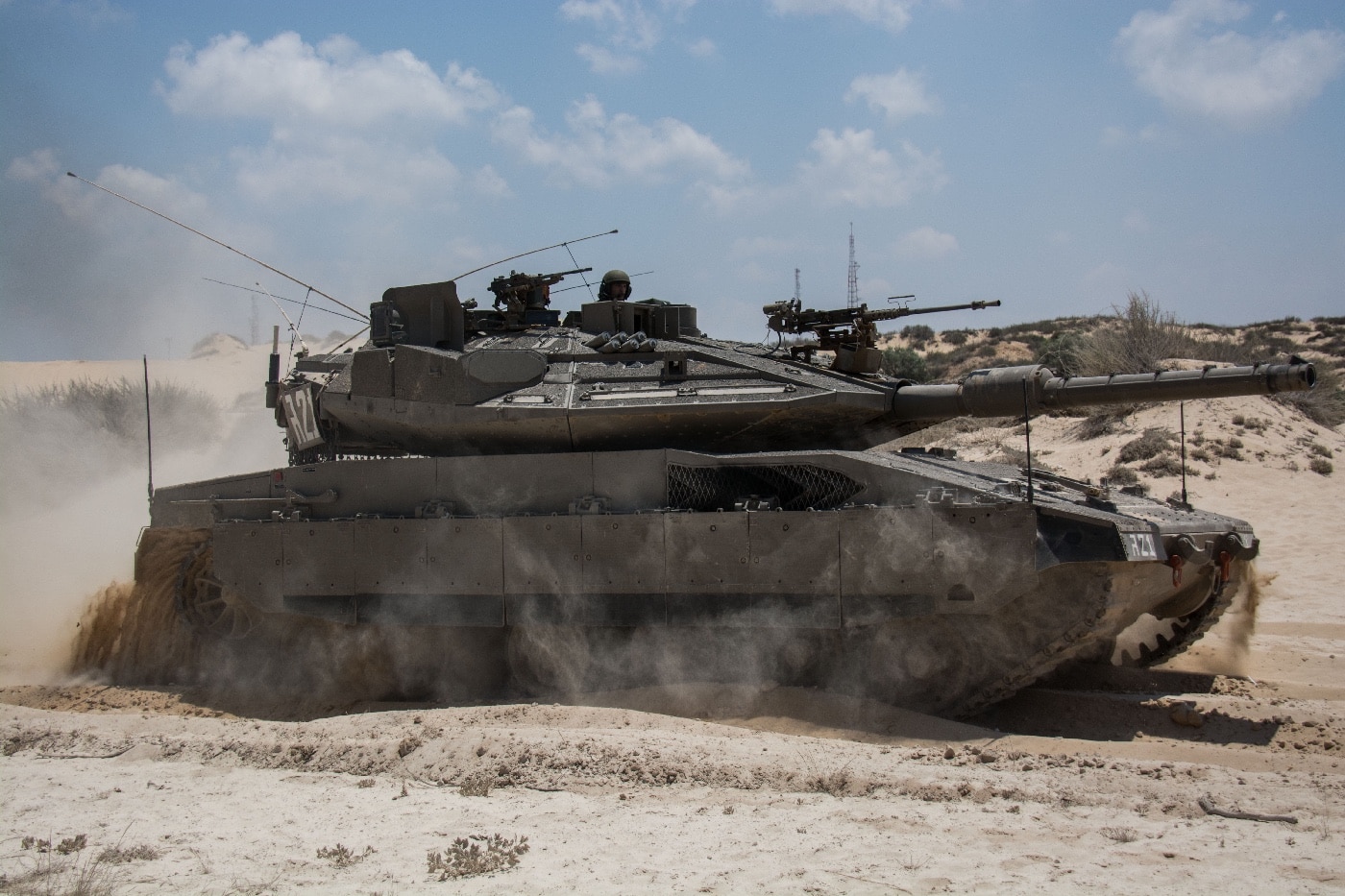
Moreover, the turret’s large bustle was also protected by a shirt of heavy chains suspended from the outer edge and kept in place by heavy weights. This was meant to counter HEAT (high explosive anti-tank) rounds should any strike the turret. The round would detonate on hitting the chains instead of the turret ring.

The Merkava’s suspension was comprised of six road wheels per side with the drive sprockets at the front and idlers at the rear, along with return rollers, while armored skirts were employed to protect the top half of the tracks, the suspension, and the sides of the hull from HEAT rounds. Beyond the ability to store the ammunition, the spacious compartment at the rear of the tank could also carry six fully equipped soldiers, who could enter or exit the vehicle largely unobserved from the aforementioned rear hatch.
The initial model, the Merkava Mk I, was armed with the widely used M68 105mm rifle main gun, while secondary armament consisted of a coaxial 7.62mm machine gun and a pair of 7.62mm anti-aircraft machine guns. Unlike Western-made tanks of the era, it was also equipped with a 60mm mortar that the crew could operate from within the chassis.
Mk II and Mk III — Combat Improved Chariots
The Mk I had its baptism of fire in 1982, and its few shortcomings were quickly determined. The Mk IIA was the first updated model, entering service in April 1983. It featured minor adjustments, including increased armor, yet employing the same 105mm gun and 60mm mortar.

It was followed by the Mk IIB, which offered thermal optics and enhancements to the fire control system. The Mk IIC provided additional armor to the top of the turret, while the Mk IID saw the addition of modular composition armor at the chassis and turret, which allowed for rapid replacement of damaged armor panels.
In 1989, the tank saw a more significant update with the Mk III, which was essentially a new tank design. It was armed with a heavier-hitting 120mm smoothbore main gun and a revised suspension system, along with a new engine and transmission. The turret was also redesigned to allow for easier movement for the crew.
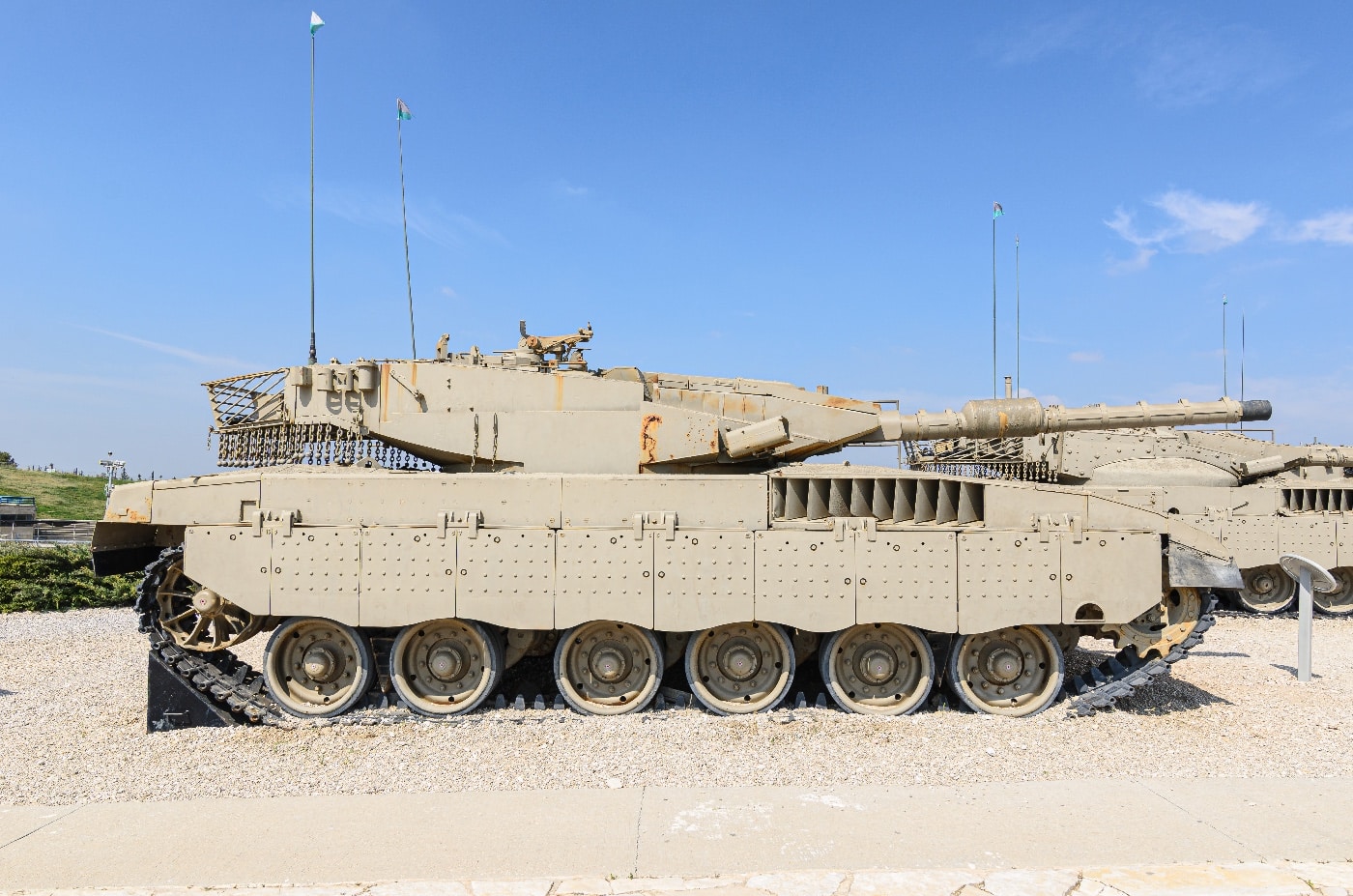
The Mk III saw further improvements beginning in 1995 with the Mk IIIB — also known as the Merkava Baz (Hebrew for Falcon). The improved model was equipped with an improved fire-control system and built-in NBC (nuclear, biological, chemical) protection, and, notably, an air conditioning system. The latter feature was likely especially welcomed by the crew who would stay buttoned-up in the tank for hours at a time. The Baz model’s fire-control system, developed by Electro-Optics Industries (EL-OP) and Elbit Ltd, included an automatic target tracker that provided operators with the ability to engage moving targets while also on the move.
Nearly all earlier Mk III models were upgraded to the Baz standard, while the Mk IIID (Dor-Dalet, or Fourth Generation) featured further improved modular composite armor on the chassis and turret.
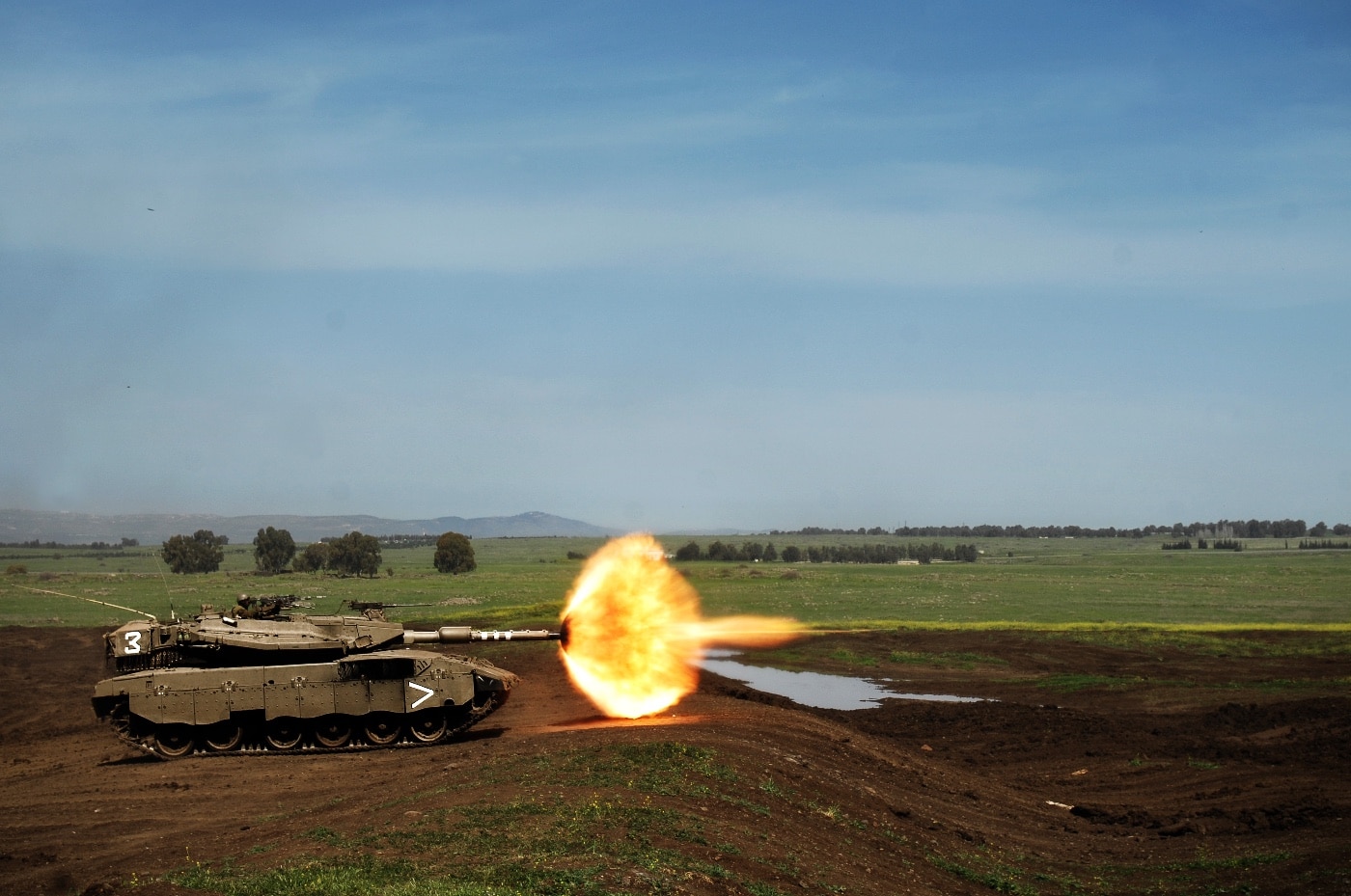
In total, around 780 Mk III models were believed to have been produced, but the IDF has never released official numbers due to security concerns — and to keep potential adversaries guessing.
Merkava Mk IV
In 1999, development began on the Merkava Mk IV, which was officially revealed to the public in 2002. Two years later, the first Mk IV battalion became fully operational. With its introduction, the IDF began to retire its older U.S.-made M60A1 series tanks.

Most notable of the Merkava Mk IV was its larger crew compartment, which could allow for the carrying of eight infantry soldiers, a command group or three litter patients — in addition to the four-person crew. As with previous models, it was designed to be able to fire on the move at moving targets, including at enemy helicopters.
The Mk IV was also armed with the same Israeli Military Industries (IMI) 120mm smoothbore main gun, while powered by an MTU 1200hop V-12 diesel engine built under license from General Dynamics Land Systems (GDLS). That provided the Merkava a bit more pep. The original model was only able to reach speeds of around 46 km/h (30 mph), whereas the Mk IV could hit 65 km/h (40 mph).

The Merkava Mk IV was also one of the first armored vehicles to be equipped with the Trophy Active Protection System (APS). Developed by Israel’s Rafael Advanced Defense Systems and Israel Aircraft Industries’ Elta Group, the Trophy Active Protection System was designed to detect and neutralize incoming projectiles. The system utilized four radar antennas and fire-control radars to track incoming threats such as anti-tank guided missiles (ATGMs) and rocket-propelled grenades. Once an incoming projectile was detected, the Trophy system fired a shotgun-type blast to neutralize the threat.
The Trophy APS was first installed on the Merkava tanks in late 2009, and it received its “baptism of fire” on March 1, 2011. The system has since proved its efficacy in multiple combat deployments, including during Operation Protective Edge where IDF tanks were able to operate in the Gaza Strip without suffering any losses. The Mk IV is among the tanks employed in Israel’s ongoing conflicts, including its campaigns against Hamas in Gaza and Hezbollah in southern Lebanon.
Revolutionary Merkava Barak
In September 2023, the Merkava Barak — the fifth-generation model — was delivered to the 52nd Armored Battalion of the 401st Brigade after five years of development.
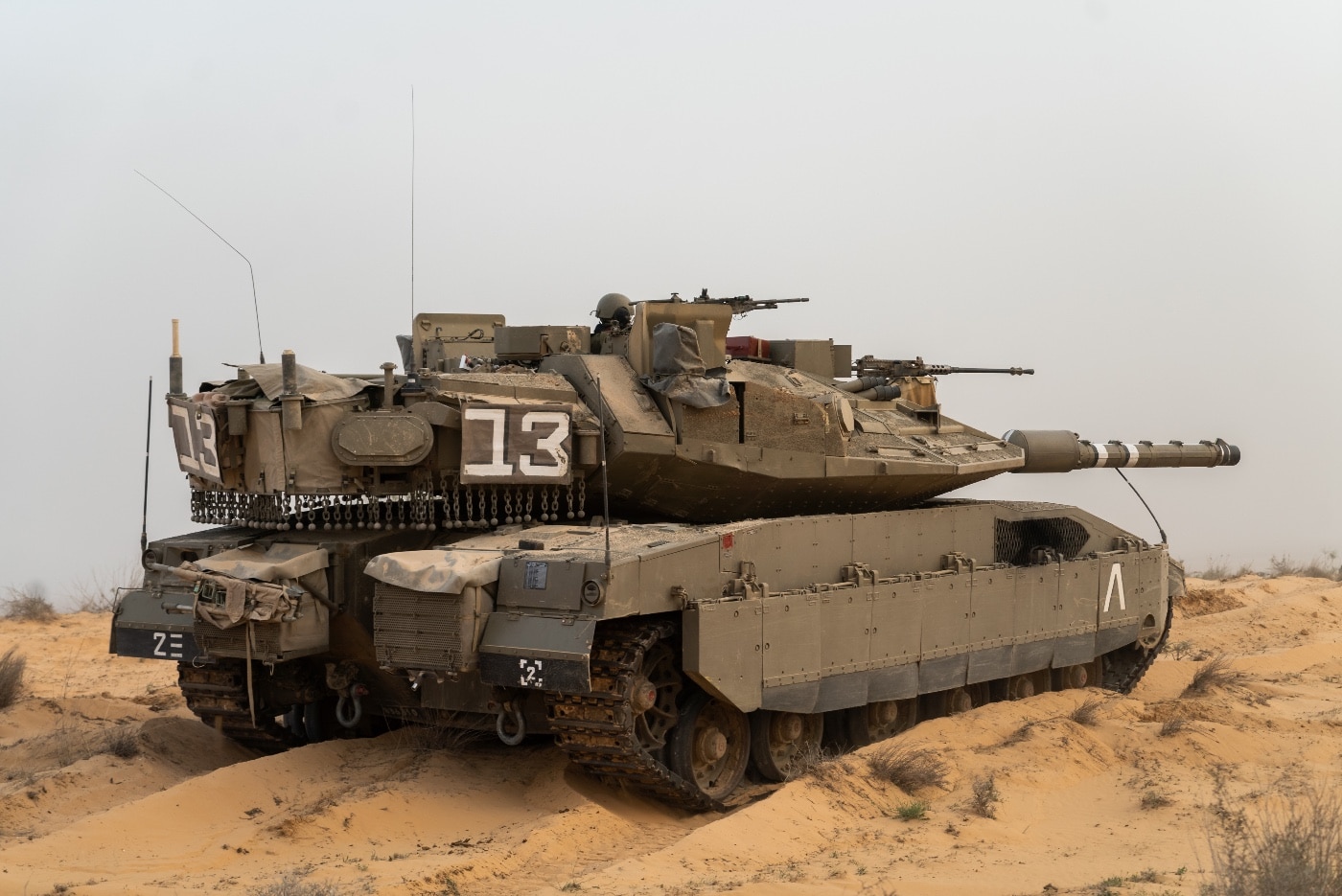
According to The Times of Israel, “The Barak tank was developed jointly by the Defense Ministry’s Armored Vehicles Directorate and the IDF’s Ground Forces and Armored Corps, and includes systems developed by several Israeli defense firms, including Elbit Systems, Rafael, and the Israel Aerospace Industries’ Elta subsidiary, among other companies.”
The Israel Ministry of Defense (MoD) described the tanks as “a real revolution on the battlefield” and, while key capabilities remain classified, it has been reported that the Barak models are equipped with new sensors that can detect targets and share intelligence with other tanks and units.

“The Barak tank will strengthen the capabilities of detecting enemies and will enable fighting against an enemy with a reduced signature and in all combat scenarios, on the current and future battlefield, against the entirety of threats that exist for the maneuvering force,” the MoD added.
Seeing the Israeli Tank
The best way to see a Merkava tank would be to head to the warzones in Gaza or southern Lebanon — which isn’t recommended. However, as Israel hasn’t widely exported its armored chariots, only a few are now in museums.
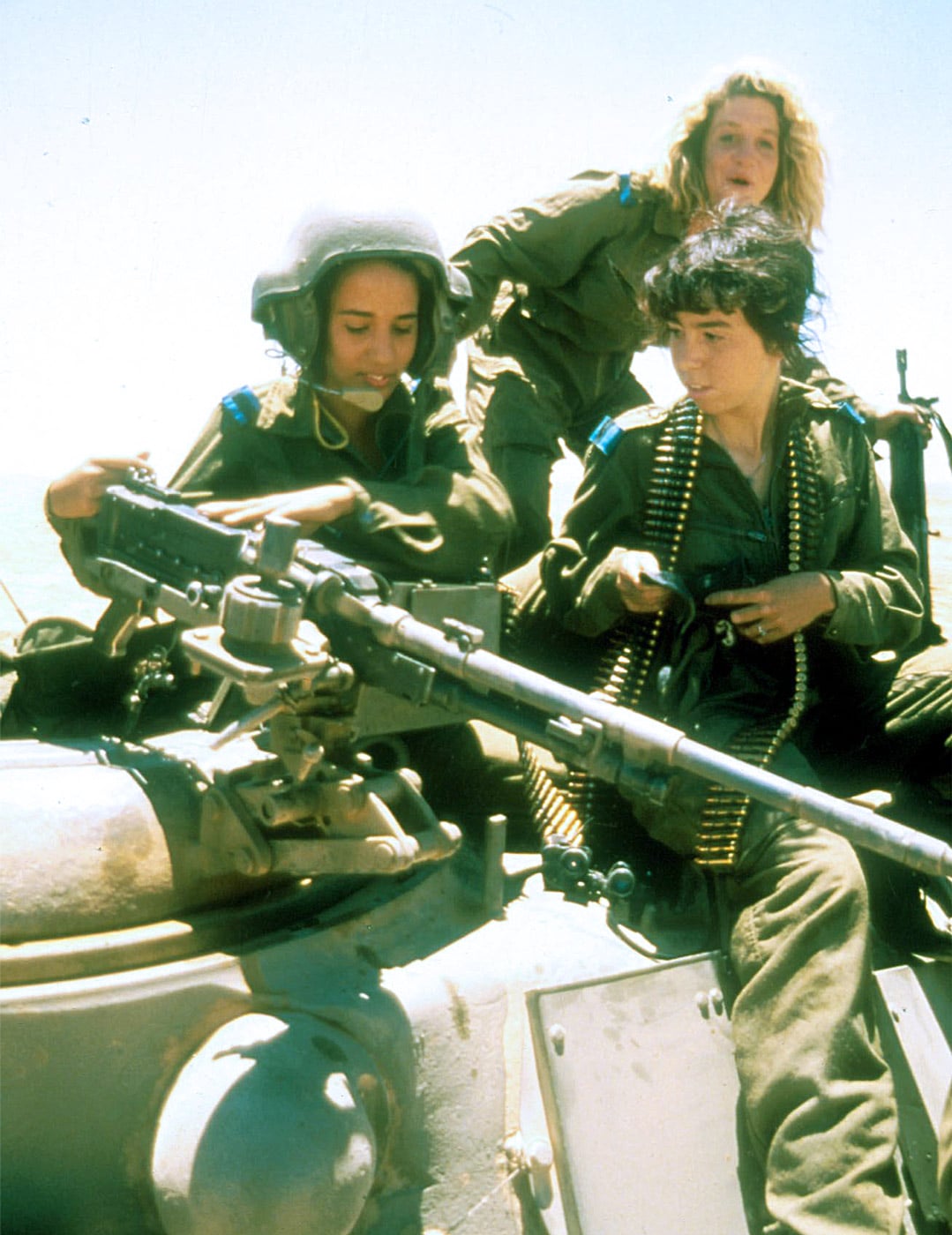
Fortunately, one of the earliest Mk I models is now in the famed Bovington Tank Museum in the UK. In addition, a Mk IB is also in the Tank Museum Lešany in the Czech Republic, while the Panzermuseum in Munster, Germany, and Saumur Tank Museum in France also have models in their respective collections.
Even though the tank has been a closely guarded secret of the State of Israel, one was sent to neighboring Jordan — and not as an invader.

The one-time adversaries have become regional partners and, in 2018, as part of the growing defense and diplomatic ties between Jerusalem and Amman, Israel donated one of its retired Merkava tanks to Jordan. That tank has since been placed on exhibit at the Royal Tank Museum, which was established by King Abdullah in 2007 to preserve tanks and armored vehicles used by the Jordanian Armed Forces (JAF), as well as to showcase other important tanks from around the world.
That transfer of the tank to Jordan was not without some controversy, but was made by Prime Minister Benjamin Netanyahu and Defense Minister Avigdor Liberman, who considered it carefully due to the sensitivity of providing an Arab country — even one with which Israel has peace — with one of its most top-secret weapons.
Yet, it was argued that what would one of the best tank museums in the world be without one of the best tanks ever built?
Editor’s Note: Please be sure to check out The Armory Life Forum, where you can comment about our daily articles, as well as just talk guns and gear. Click the “Go To Forum Thread” link below to jump in and discuss this article and much more!
Join the Discussion
Read the full article here











